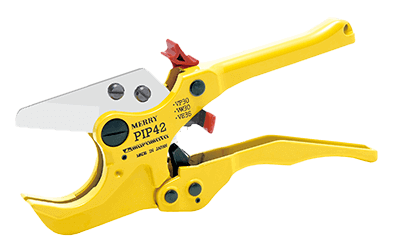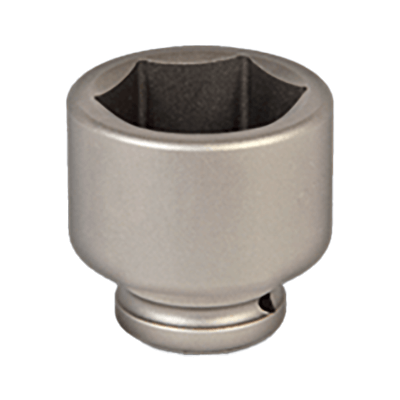Qu’est-ce qu’un capteur LiDAR ?
Le capteur LiDAR est un terme générique désignant un appareil qui mesure la distance et la forme d’un objet en émettant un faisceau laser et en détectant la lumière réfléchie ou diffusée.
Parmi les capteurs LiDAR, LiDAR est le nom donné à l’acronyme “Light Detection and Ranging”. En particulier, il est souvent utilisé pour mesurer le temps de vol dans la détection de la lumière et est également appelé capteur TOF (time-of-flight).
Les méthodes de modulation continue de fréquence utilisant l’effet Doppler sont également utilisées pour des mesures avancées et sont connues sous le nom de méthodes FMCW (Frequency Modulated Continuous Wave). Ce type de technologie permettant de mesurer des distances à distance est appelé technologie de télédétection.
Utilisations des capteurs LiDAR
Les utilisations typiques actuelles des capteurs LiDAR sont la technologie de conduite automatique dans les automobiles et la technologie de détection d’images pour les smartphones, etc. À l’origine, cette technologie est utilisée depuis longtemps dans les radars d’avions et l’observation météorologique.
Récemment, avec les ADAS (Système d’aide à la conduite), elle est devenue un élément indispensable à la réalisation de la technologie de conduite automatisée, telle que la détection des obstacles et des véhicules à proximité dans les véhicules. Elle est activement développée en termes de miniaturisation et de réduction des coûts.
De plus, dans les usines, les ADAS commencent à être utilisés en combinaison avec des équipements de traitement d’images et des caméras de smartphones. Il s’agit d’aider à effectuer efficacement la mise au point dans la photographie, et en tant que technologie pour la RV (réalité virtuelle) et la RA (réalité augmentée). L’utilisation de capteurs LiDAR dans l’iPhone12Pro et l’iPhone12ProMax d’Apple a également considérablement accru la notoriété des capteurs LiDAR .
Principe des capteurs LiDAR
Le principe des capteurs LiDAR consiste en un laser comme source de lumière et un élément récepteur de lumière, qui mesure la distance d’un objet en recevant la lumière laser émise à l’aide d’une méthode physique. Par exemple, dans la méthode TOF, actuellement la plus utilisée, la distance par rapport à un objet est déterminée en mesurant le temps nécessaire au faisceau laser pour revenir vers l’objet par réflexion ou diffusion (temps de vol, TOF).
Il existe deux méthodes d’irradiation d’un faisceau laser : l’irradiation à champ large et le balayage, où le faisceau laser est irradié dans une direction spécifique et ensuite balayé.
1. Méthode d’illumination à champ large
La méthode d’illumination à champ large est également appelée caméra TOF car elle peut être utilisée de la même manière qu’une caméra ordinaire : elle peut acquérir des informations sur l’ensemble du champ de vision en une seule fois avec un seul faisceau de lumière. Le système optique est extrêmement simple, ce qui en fait un dispositif relativement peu coûteux.
Cependant, le faisceau laser doit être étalé pour couvrir l’ensemble du capteur. Cela réduit la densité de photons par pixel. Cette méthode est sensible à la lumière ambiante et présente l’inconvénient d’avoir une courte distance de mesure.
2. Méthode par balayage
La méthode de balayage, quant à elle, utilise des miroirs pour balayer le faisceau laser. Il existe deux types de systèmes de balayage : le système de balayage ponctuel, qui balaye chaque pixel, et le système de balayage linéaire, qui balaye chaque ligne. Le premier est plus précis mais nécessite plus de temps de mesure. C’est pourquoi la méthode de balayage linéaire, qui présente la caractéristique inverse, est utilisée lorsqu’une résolution spatiale élevée n’est pas nécessaire.
Autres informations sur les capteurs LiDAR
1. Différences entre les méthodes TOF et FMCW
Il existe deux méthodes de détection pour les capteurs LiDAR, la méthode TOF (temps de vol) et la méthode FMCW (modulation continue de fréquence). La principale différence est la quantité physique utilisée pour la méthode de détection de la distance : la méthode TOF mesure le temps nécessaire à un faisceau laser pulsé pour se réfléchir sur un objet afin de mesurer la distance. La méthode FMCW utilise l’effet Doppler de l’onde réfléchie par l’objet lorsqu’une onde continue est émise à des fréquences variables pour mesurer la distance.
La méthode TOF est plus simple dans son principe et permet de réduire le coût des capteurs LiDAR. Toutefois, comme il est difficile de distinguer si la lumière laser émise sur un objet est émise par l’utilisateur ou par une autre source, il est peu probable qu’elle devienne la technologie de base de la technologie actuelle de conduite automatisée. La méthode FMCW, qui permet des mesures plus avancées, est considérée comme prometteuse.
La méthode FMCW doit également résoudre certains problèmes pour la conduite automatisée, tels que le problème de cohérence qui limite la distance de mesure et la réduction des coûts. Des travaux de recherche et de développement plus avancés visant à résoudre ces problèmes sont actuellement menés activement, principalement par des instituts de recherche du monde entier.
2. Caméras pour capteurs LiDAR
Les capteurs LiDAR et les caméras sont généralement séparés. Cependant, si le capteur LiDAR et la caméra sont des unités séparées, une légère parallaxe se produit lorsque les données du capteur LiDAR et de la caméra sont combinées, et il n’est pas possible d’obtenir une grande précision. C’est pourquoi il existe désormais un type de capteur qui combine la caméra et le capteur LiDAR en une seule unité.
Ce type de capteur permet de créer des images 3D à haute résolution en combinant les données de la caméra et du capteur LiDAR. Il permet également d’effectuer des mesures de haute précision sans parallaxe ni distorsion, et devrait donc être utilisé comme capteur embarqué.
3. Prévision de la demande de capteurs LiDAR
Récemment, la recherche et le développement de la technologie de conduite automatisée ont connu un essor considérable, principalement sous l’impulsion de Toyota Corporation. L’industrie des capteurs LiDAR et des lasers s’est accélérée en conséquence.
Le cabinet d’études de marché Yano Research Institute prévoit que la taille du marché des capteurs LiDAR et des lasers atteindra 3,5 milliards d’euros d’ici 2030. Dans une étude de 2019, une autre société d’études de marché, Yor Development, prévoyait que la taille du marché des capteurs LiDAR augmenterait pour atteindre 5,5 milliards d’euros d’ici 2024.
La demande de capteurs LiDAR devrait continuer à augmenter, en particulier dans les pays développés.

